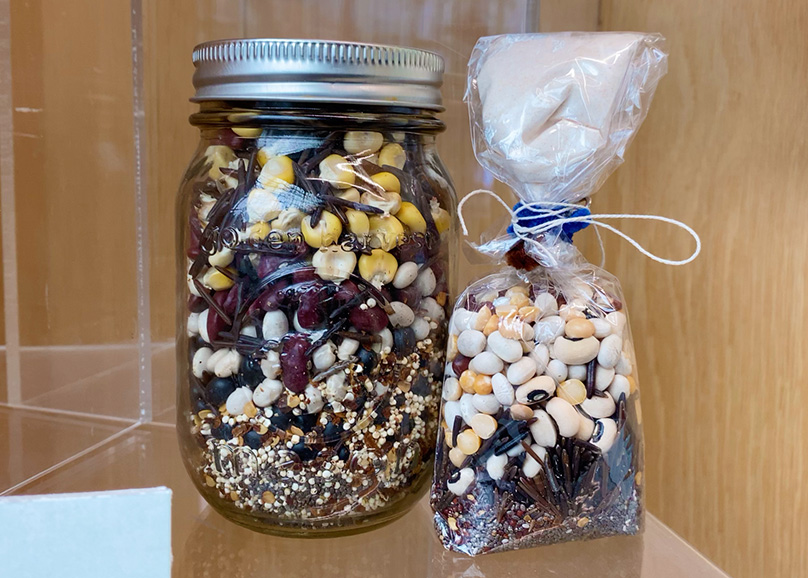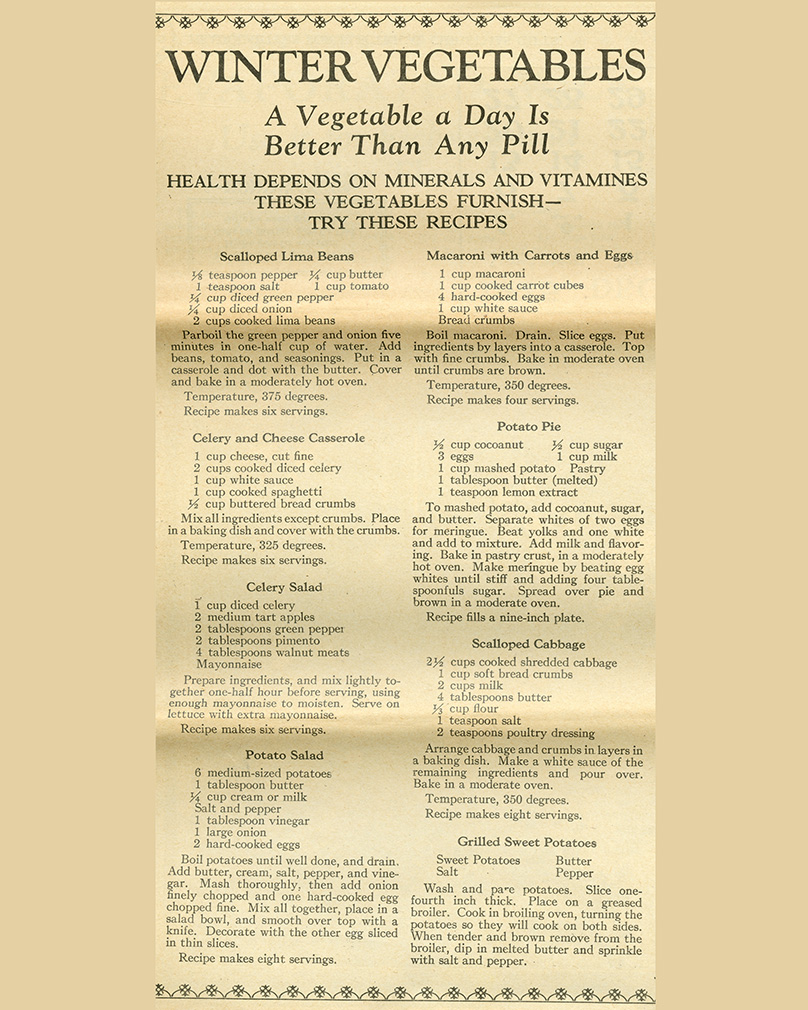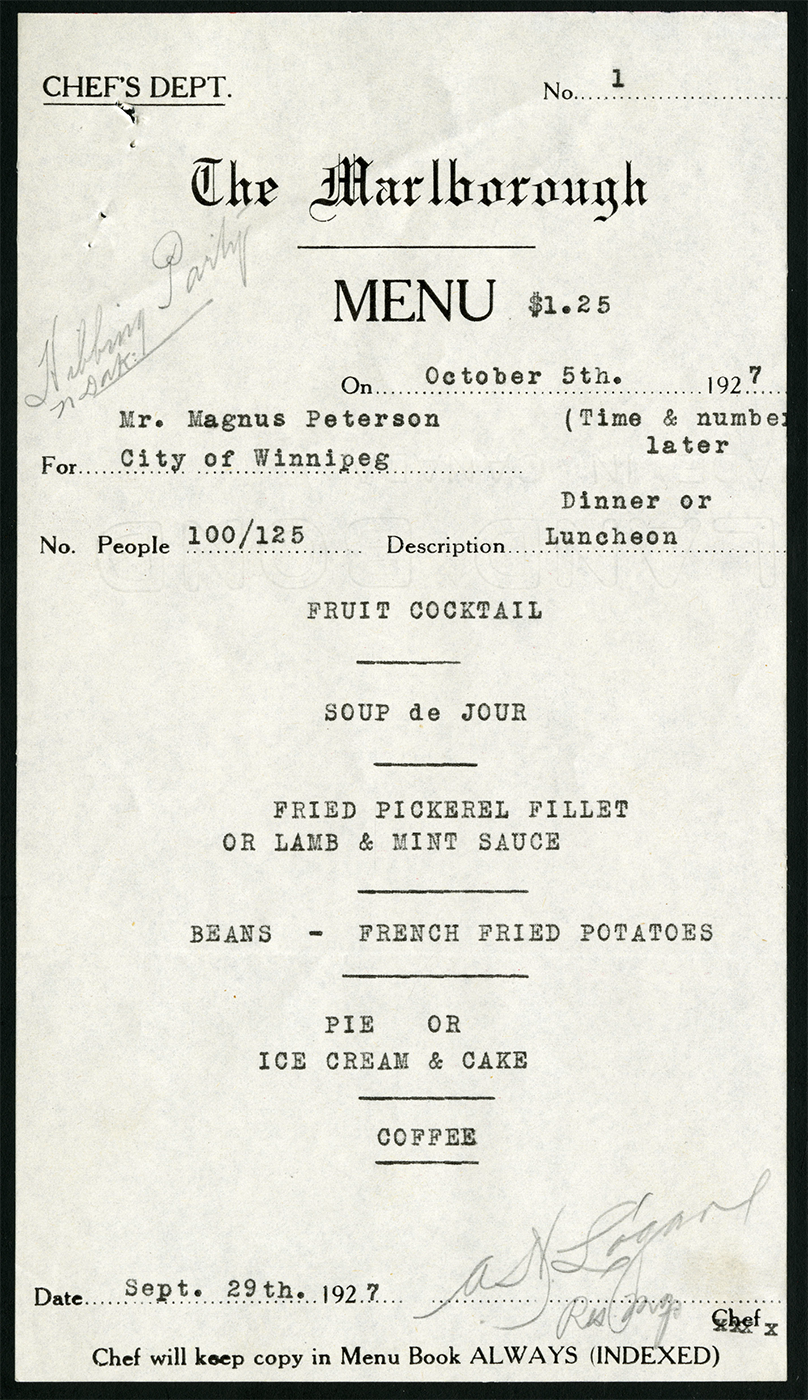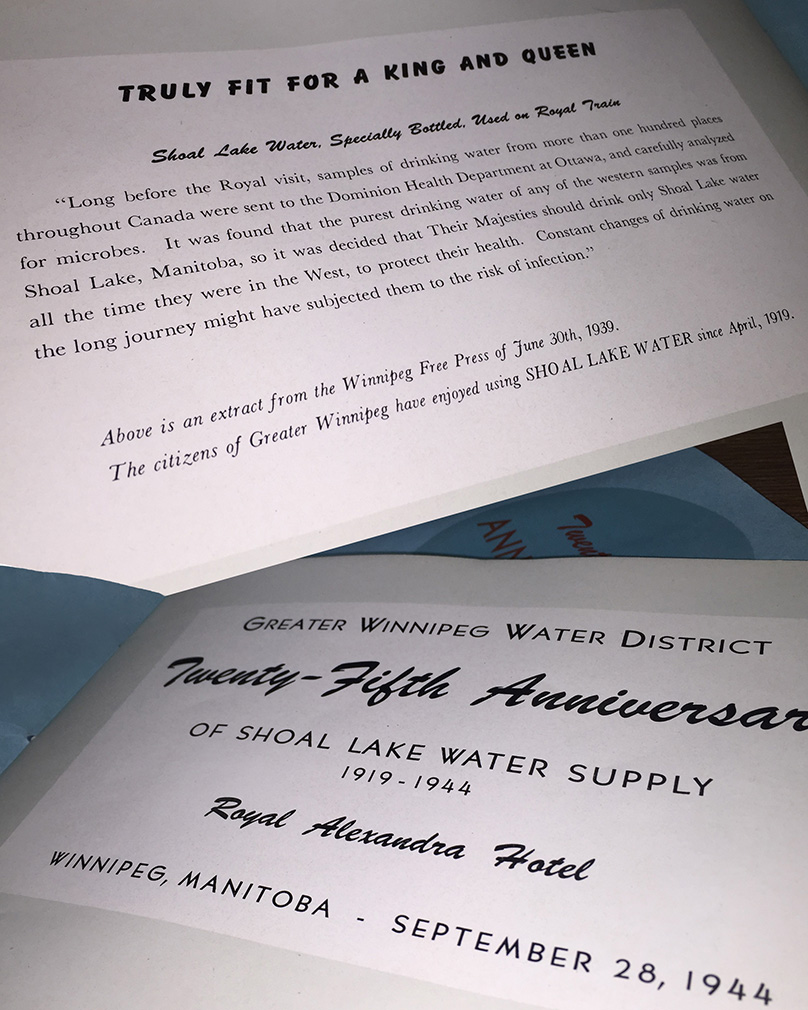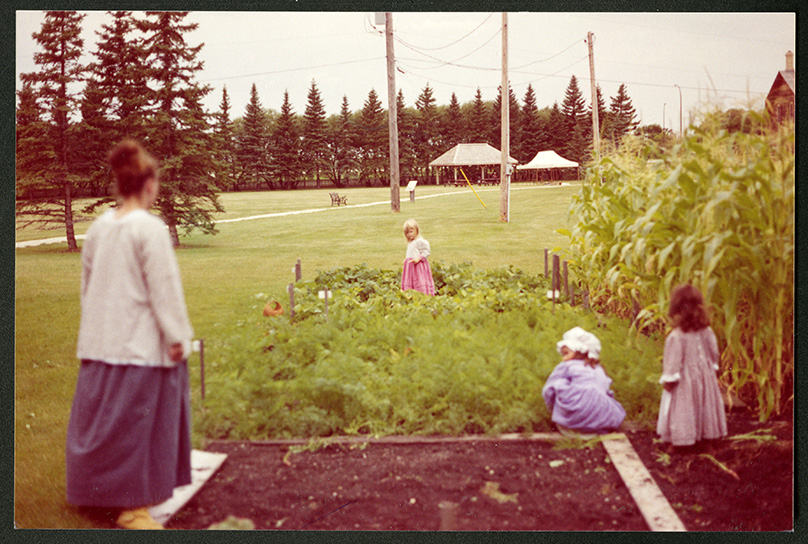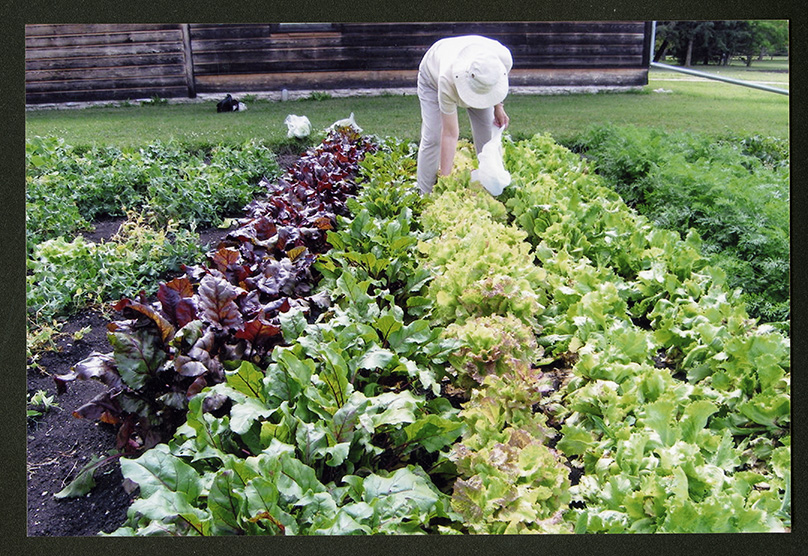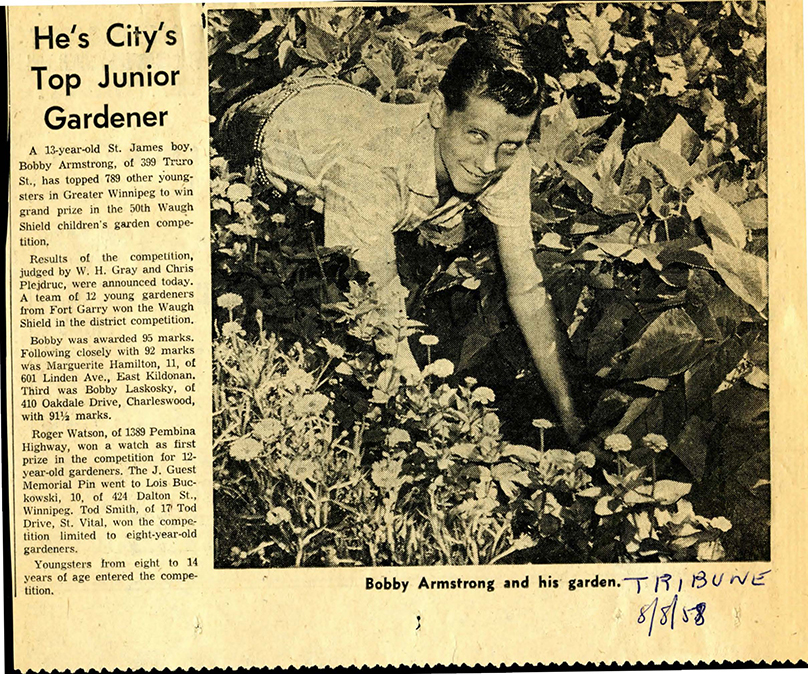Story Seeds – Part 6: Dimensions of a diet
Beyond the bison
Bison are considered sacred by many Nations of Indigenous people, and they were once an important source of food. ‘Beyond the Bison’ is an expression that promotes a relational understanding of all living things, including plants and the environment, and how they are connected.
In days past, there were a range of activities like crop harvesting, hunting, trapping, and fishing that contributed to a well-balanced diet.
With the early cultivation of beans, soup is a culinary tradition that has warmed the spirits of Indigenous people for a very long time.
Trivia: Of the Three Sister Spirits, which is the eldest?
- Most people think it’s Corn, but … it’s Squash!
- Sister Bean is the youngest.
- With Tobacco and Sunflower, it’s often referred to as a Five Sisters Garden. Sunflower and Marsh Elder are two of the oldest Indigenous North American
DIY Sister Bean Soup reflects the layers of plant knowledge and makes a thoughtful gift!
A vegetable a day is better than any pill
Some of the better-known crops and plants domesticated and nurtured by Indigenous People of the Americas were presented earlier. They include corn, beans, squashes, potatoes, sweet potatoes, quinoa, arrowroot, tomatoes, coconut, peppers, peanuts, and cherries – to name a few!
When you take a bite of your pizza, imagine what it might be like without tomato paste?
First Nations rarely receive credit for developing most of these plants. People often associate them with the countries that made them widely known, like potatoes with Ireland. They don’t realize the mountainous areas of South America are the true home.
This page from a 1925 calendar features recipes for cooking with winter vegetables.
- How many of the items draw from Indigenous plant sources?
- What about your favourite recipes from today?
Chef’s menu book
This menu is from a luncheon that took place on October 5, 1927, at the Marlborough Hotel in Winnipeg.
- How many items from the menu draw from Indigenous plant sources?
- What about the food you eat at a restaurant today?
- Can you imagine fast food without fries?
- How much of the food you eat daily is connected to Indigenous plant sources?
Shoal Lake water and the royal train
The Anishinaabe community of Shoal Lake 40 First Nation is at the source of Winnipeg’s water. For over 100 years, First Nation residents lacked access to clean drinking water.
At the other end of the pipe, it was sold and bottled as a commodity for urban citizens and distinguished guests.
Garden culture
Like Indigenous folks, other cultures enjoy intergenerational gardening. This practice supports the transfer of knowledge through observation and hands-on learning.
Dig for it!
Youth gardening programs are also important for the transfer of knowledge. The City has offered many since the early 1900s.
Starting in 1910, the Waugh Shield Children’s Gardening Competition opened to children between the ages of 8 and 14. According to its founder, Richard D. Waugh, a former Mayor of Winnipeg, it was meant to encourage appreciation of nature and skills building.
Participants had to use seeds given to them. These included table beets, carrots, dwarf beans, zinnias, and marigolds. Noteworthy gardens were entered into competition. The municipality that produced the best garden won the Waugh Shield.
Engage with gardening
Winnipeg’s rich gardening history is the foundation for present and future initiatives.
To encourage engaging with garden culture and to promote a sustainable future, City Council officially recognized 2022 as the Year of the Garden. They also made June 19, 2022 as National Garden Day in Winnipeg.
View the Year of the Garden poster to find multilayered gardening experiences in Winnipeg!


